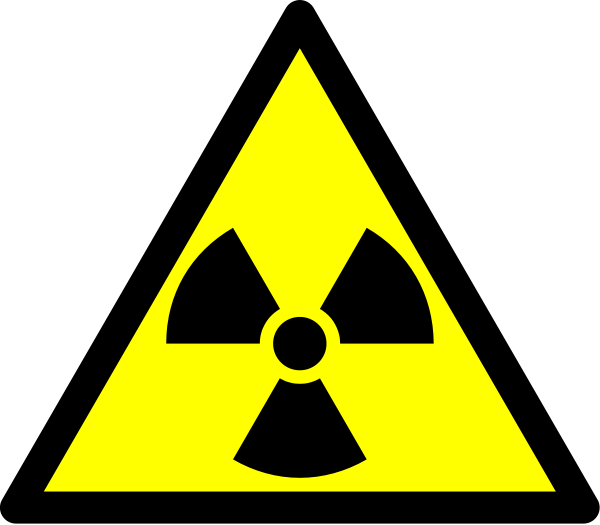Radioactivity and Radiation
What is radiation? What is radioactivity?

A radioactive atom is one that spontaneously emits energetic particles or waves (known as radiation). This radiation is emitted when an unstable (i.e. radioactive) nucleus transforms to some other nucleus or energy level. Imagine a big ball made of magnets that’s spinning really fast. Sometimes a few pieces of the magnet will shoot out and hit the wall. That’s kind of what radiation is like. As it applies to nuclear energy, many materials created during the operation of a reactor are unstable. As they decay over varying lengths of time (from microseconds to hundreds of thousands of years), they emit energetic particles or waves. The energy carried by this radiation is often sufficient to cause damage to biological cells and is therefore a health risk. Thus, radiation is the primary cause of safety concerns related to nuclear energy.
If you’re looking for math, see the math behind radioactive decay page.
Types of Nuclear Radiation
There are several types of particles or waves that may shoot out of a radioactive nucleus. Alpha particles, beta particles, gamma rays, and neutrons are the most common forms of ionizing (i.e. dangerous) radiation.
Alpha Particles
Named alpha because they were the first to be discovered, these particles are made up of 2 protons and 2 neutrons: the helium nucleus. Often, large atoms decay by emitting an energetic alpha particle. These particles are relatively large and positively charged, and therefore do not penetrate through matter very well. A thin piece of paper can stop almost any alpha particle. However, the particles cause extreme damage of materials that they stop in by displacing atoms as they slow. Paper under sustained alpha-irradiation would degrade.
Beta Particles
Beta particles are energetic electrons that are emitted from the nucleus. They are born when a neutron decays to a proton. Since neutrons are neutral particles and protons are positive, conservation of charge requires a negatively charged electron to be emitted. Some isotopes decay by converting a proton to a neutron, thus emitting a positron (an anti-electron). These particles can penetrate matter more than can alpha particles, and it takes a small aluminum plate to stop most beta particles.
.
.
Gamma rays
Gamma rays are photons that are emitted from the nucleus. Often an atom in an excited state will de-excite by emitting a gamma ray. Gamma rays are similar to light waves and x-rays, except they are usually much higher frequency and consequently, more energetic. This radiation has no charge, and can penetrate most matter easily, requiring lead bricks for shielding.
Common sources of radiation
“Man-made” radiation
Smoke detectors

Smoke detectors make use of the isotope Americium-241. This isotope emits alpha-particles at energies up to 5.4 MeV. The energetic alpha particles are used to ionize air. Once the air is ionized, a small current runs through it. When smoke enters the chamber, the current experiences an increase in resistance and a circuit sounds the alarm.
Coal-burning power plants
Coal is an impure fuel, and it usually contains 1.3 ppm of uranium and 3.4 ppm of thorium (not to mention arsenic, mercury, and sulfur). When coal burns, these isotopes are emitted into the atmosphere, where they enter our ecosystem. This leads to the astounding fact that the population effective dose equivalent from coal plants is 100 times that from nuclear plants.
Nuclear weapon detonations
The hundreds of atmospheric nuclear weapons tests that occurred before they were banned by the 1963 Limited Test Ban Treaty left long-lived radioisotopes in the atmosphere. Some of these are still in the atmosphere and account for some of our daily dose.
Natural radiation
Radon gas This natural occurring gas comes from soil and is found throughout the world. It emits alpha particles, and can therefore damage DNA and lead to cancer if inhaled. The EPA recommends you check your house for radon gas.
Cosmic rays
Cosmic rays are energetic particles that originate outside of earth, in the sun, distant stars, galaxies, and supernovae. Most of these are protons. The atmosphere shields us from most cosmic rays, but during air travel, one will accumulate much higher dose. Don’t believe it?




